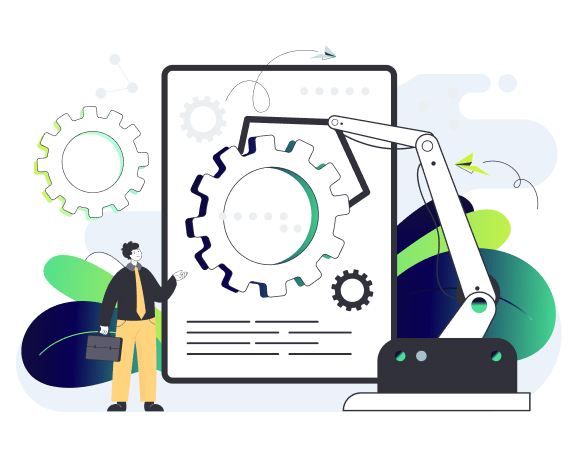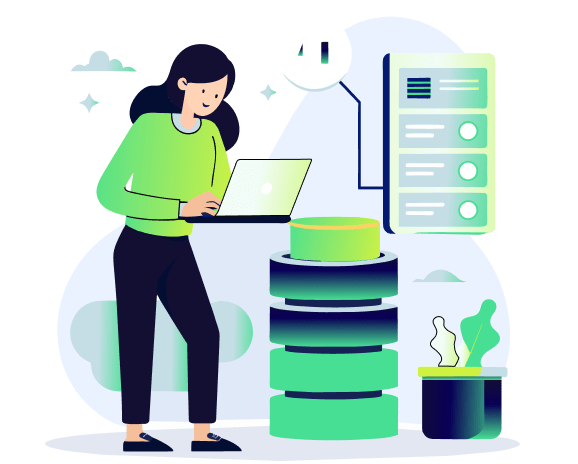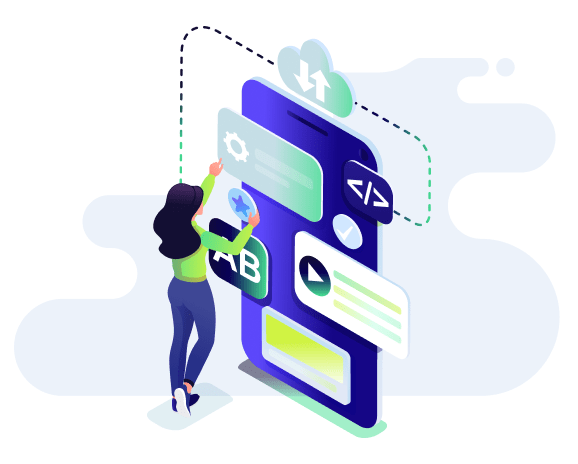Cut Costs with AI & Machine Learning in Software Testing

Discover how powerful AI tools and test-driven Machine learning can accelerate and improve test coverage and reduce costs.
Introduction
In the ever-evolving world of software development, testing takes center stage to ensure flawless user experiences. But let’s face it: traditional testing methods can be a real pain. They eat up time, drain resources, and leave room for pesky human errors. As risks and security breaches run rampant in today’s digital landscape, organizations face mounting pressure to level up their testing game.
But fear not! This case study explores the exciting world of AI and test-driven machine learning, showing how these advanced technologies can overcome testing difficulties, reduce expenses, and greatly improve the efficiency of your testing procedures. Get ready to unleash the power of quality like never before!
The High Costs of Risks and Security Breaches
In an increasingly interconnected world, software failures and security breaches come with substantial financial and reputational costs. Industry statistics reveal that software bugs and vulnerabilities cost the U.S. economy an estimated $59.5 billion annually. Furthermore, the average cost of a data breach in 2021 was a staggering $4.24 million (source: Ponemon Institute). These figures underscore the urgent need for robust and efficient software testing to mitigate risks and potential financial losses.
Challenges with Current Testing Methods That Increase Costs
- Manual Effort and Resource Allocation
Current testing methods face challenges due to manual efforts and resource allocation. Labor-intensive processes demand dedicated personnel to carry out repetitive tasks, leading to increased costs. Skilled testers are often necessary, resulting in higher salary expenses. Moreover, as software complexity grows, the need for manual effort escalates, adding extra testing costs. These factors highlight the limitations of current methods and the need for more efficient and cost-effective testing solutions like testing in ML. With machine learning algorithms used, testing in ML can analyze historical test data to identify areas of higher defect probability, enabling proactive testing measures and optimizing resource allocation. - Test Environment Setup and Maintenance
Traditional approaches often require significant time and resources. This includes acquiring hardware, obtaining software licenses, and maintaining infrastructure, all of which contribute to the overall costs. Additionally, ensuring compatibility across various operating systems, browsers, and devices further adds to the expenses. AI and ML testing tools automate repetitive tasks, reduce manual effort, and optimize resource allocation. They generate test scenarios and prioritize cases, enhancing efficiency in testing ML models. These factors highlight the complexities and financial burdens associated with test setup and maintenance in current testing methods, that can be combated with testing with machine learning models. - Test Execution and Time Constraints
Manual execution of test cases is time-consuming, particularly for large-scale projects. Longer test execution cycles result in delays in software delivery, leading to potential revenue loss. To meet project deadlines, overtime payments or additional hiring may be necessary, resulting in additional expenses. - Regression Testing and Maintenance
Regression testing is essential to ensure that changes or updates in the software do not introduce new defects. With traditional methods, regression testing is often performed manually, resulting in increased effort and costs. Additionally, there is a huge overload in maintaining test scripts and updating them for every software.
PS: AI-enabled features can help you add visual aid to your regression testing. There’s a fun read about it, here. - Defect Resolution and Post-Release Support
Traditional testing methods may fail to identify all defects, leading to post-release issues and customer support costs. Delayed defect detection and resolution can result in higher expenses related to bug fixing, customer complaints, and reputational damage. Additionally, providing ongoing support and maintenance after the software release further increases costs for organizations.
Conquering Testing Costs with AI and ML Wizardry
- Automated Testing and Resource Optimization
AI and machine learning in testing automation tools can significantly reduce manual effort and costs by automating repetitive testing tasks. Their intelligent test case generation algorithms can create test scenarios, minimizing the need for human intervention. Machine learning algorithms can analyze historical data to optimize resource allocation and prioritize test cases based on their potential impact. - Cloud-Based Testing Environments
st-driven AI tools and Machine learning models can facilitate the creation of scalable and on-demand test environments in the cloud, eliminating the need for costly infrastructure setup, maintenance, and associated costs. Virtualization and containerization technologies driven by AI can provide flexible and cost-effective test environments, reducing hardware and licensing expenses. These ML models help monitor software in the production environment, alert teams to problems, and resolve them quickly, reducing costs from defects after release. - Intelligent Test Execution and Acceleration
AI algorithms can analyze test execution patterns and optimize test suites to reduce redundancy. This eliminates unnecessary test cases and accelerates the overall testing process, as machine learning models can learn from past test runs, also eliminating the initial challenges of machine learning models. It predicts the most critical areas of the software to focus its testing efforts, optimizes resource utilization, and minimizes test execution time, which goes a long way in saving costs. - Smart Regression Testing and Maintenance
AI-powered test automation frameworks capture software changes and update test scripts automatically, reducing manual effort in regression testing. Testing in ML analyzes code changes and automatically generates relevant test cases for impacted areas, ensuring efficient regression testing and reducing maintenance overhead. - Early Defect Detection and Predictive Analytics
AI and testing machine learning models can analyze large volumes of test data, log files, and customer feedback to detect patterns and anomalies that indicate potential defects or quality issues without extra costs. Predictive analytics models can identify areas of higher defect probability, enabling proactive measures and reducing post-release support costs. Moreover, AI-driven monitoring and error-tracking systems can continuously monitor software performance in production, alerting teams to potential issues and facilitating timely resolution.
Conclusion
Software testing in today’s dynamic environment needs smarter tools in order to increase the level of automation they provide and enable DevOps teams to deliver high-quality applications. These tools need to go beyond being just a framework for test creation and execution and need to deliver the high level of adaptiveness and accuracy our testing processes require.
Machine learning models used for test optimization and predictive analytics can significantly boost the ROI of testing efforts by focusing resources on critical areas. Adopting smart AI tools and test-driven machine learning is at the forefront of recognizing this requirement and adds to the much-needed acceleration and automation global engineering teams need to deliver good software. By harnessing the power of these technologies, organizations can significantly reduce costs, enhance the accuracy and efficiency of testing processes, and mitigate the risks associated with software failures and security breaches, as we witness the evolution of software testing frameworks.
If you’d like to get started on leveraging AI and test-driven Machine Learning to streamline your testing processes, improve software development outcomes, and produce high-quality code – try Qyrus and see the difference it can make for your engineering team!
Unlock the full potential of AI and ML in testing processes today.





